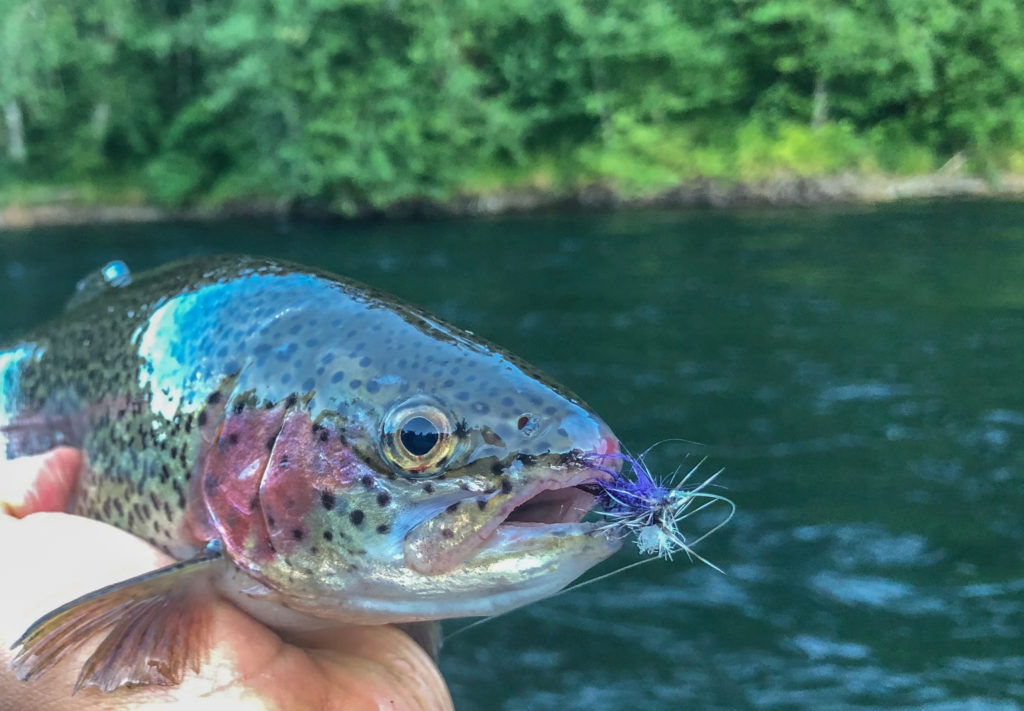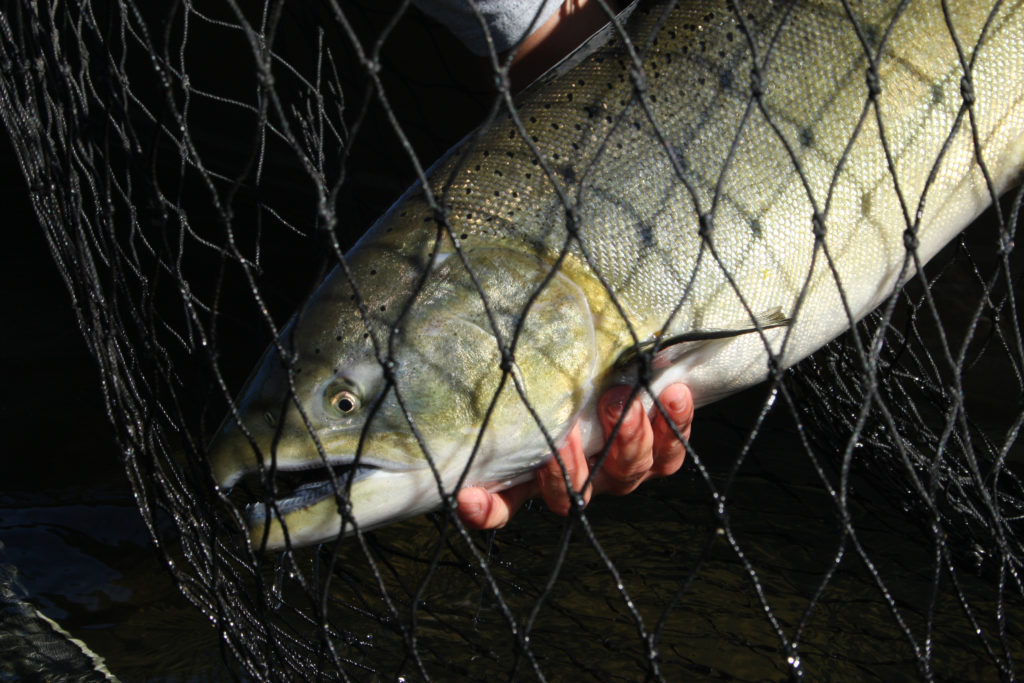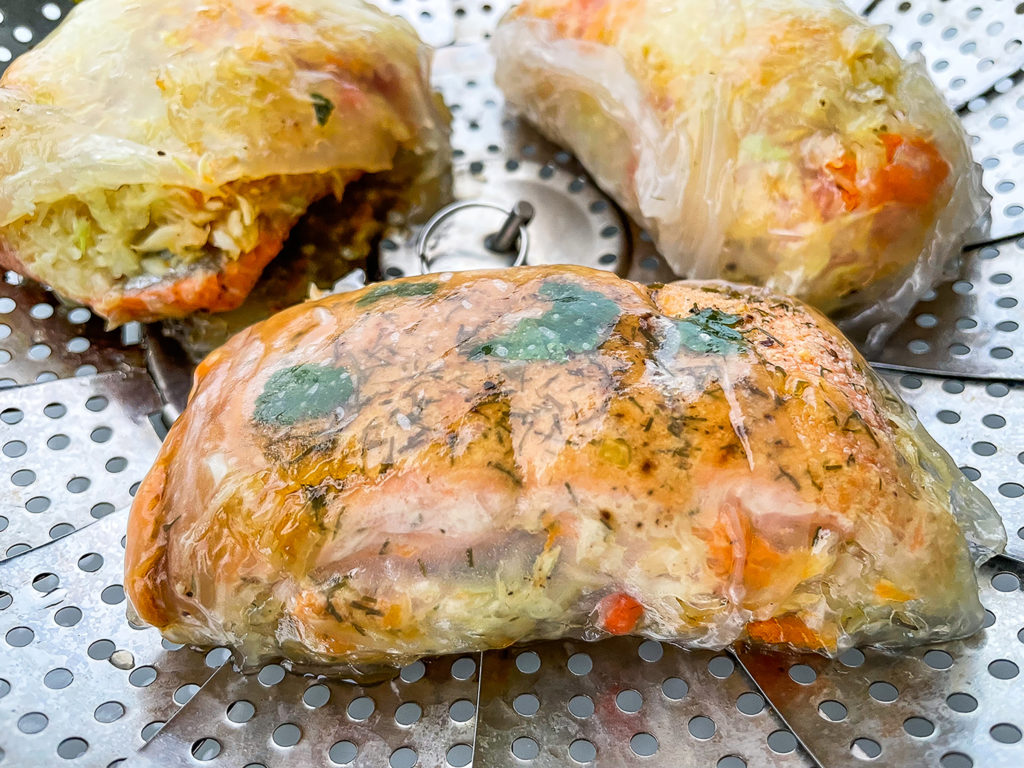Summer Trout Fishing Tips To Keep You Cool And Bite Hot

With California’s first Free Fishing Day set for this Saturday, this weekend would be a great time to try your luck for summer trout. It can be a challenge, but check out this report from From our Field to Fire team of Scott and Tiffany Haugen, which appears in our June issue:
By Scott Haugen
Typically, June marks the beginning of excessively hot days in California. While we might feel the heat, many trout rivers and streams are still running cooler. As a result, trout will be holding in slower, less taxing waters.
As water temperatures stay cool, target trout in eddies, pockets and along slow-moving current edges. But once the water temperature rises, trout will spread out. Hatchery trout will still hold in the more gentle flowing water, but they’ll also move into shallow riffles for protection, food and cooler temperatures.
DEEPER IS BETTER
If you want to target wild trout in June, concentrate on fishing deep holes. Due to the volume of water and boiling conditions, these can be challenging places to fish.
Once the water warms up in July, then focus on fishing fast water. In July, a lot of wild trout hold in fast-moving water, anywhere from 3 to 8 feet deep. Of course, depth may vary depending on the river. Search for the fastest-moving riffles in the river you’re fishing, and that’s likely a good place to target wild trout in the summer heat.

CASTING CALL
Whether fishing from a boat or off the bank, casting lures and spinners could be the most popular approach for trout anglers throughout California. Hardware like the Thomas Buoyant,
Mepps Spinner and Rooster Tail are traditional go-tos, but don’t be afraid to try something different, like a size 2 Blue Fox with an orange body and gold blade, which is an option that worked great for me last summer.
What I find interesting is that the previous two summers my standby gold and red Thomas Buoyant was the hot lure, but the trout shied away from it last summer. In fact, I was struggling to consistently catch trout – even hatchery fish – on any lures. But when I tried the Blue Fox, things quickly changed.
I’m a fan of Rooster Tail spinners in a range of sizes and colors. I’ve also had good success on Rooster Tail Minnows in clear water conditions. I think the detailed design, including a prominent eye, entices finicky trout into biting.
GO THE BACK ROUTE
When fishing from a boat, I love back-trolling plugs for trout. Whether I’m fishing the plugs or removing the hooks and using it as a diver with bait, this is a great way to cover water and search for trout.
The past few summers my go-to trout plug has been the Mag Lip in sizes 2.0 and 2.5. I’ll use a 3.0 Mag Lip as a diver, removing the hooks and running a 2-foot leader off the back, to which I’ll have a single egg, half of a nightcrawler or a pinch of nightcrawler with a salad shrimp threaded onto the bend of the hook. Trout have a powerful sense of smell, so targeting more than just their sight can be the key.
FOR THE FLY GUYS
Fly fishing – especially with dry flies – can be very effective for summer trout in transition. Early morning and evening are great times, as is fishing shade and riffles anytime of day. In June it’s hard to beat a green caddis. On those cloudy days when there’s a green caddis hatch, concentrate on fishing riffles that are moving at about walking speed with a little bit of chop on the surface.
Be sure to research the hatches on the rivers you’re fishing, as that’s the key to consistently hooking trout. Caddis flies may be prevalent all summer long, and switching to an orange or green Elk Hair Caddis pattern might entice consistent bites.
A two-fly setup can also be fantastic. A Parachute Adams, Chubby Chernobyl, Possie Bugger and a host of other beadhead nymphs are tough to beat this time of year. While these patterns can be fished on the swing, drifting and mending these presentations works well also.
ACCESSIBILITY PRINCIPLE
While the majority of trout anglers fish from the riverbank, don’t overlook the value in accessing more water. I’m often asked what my number one trick is for catching trout – as well as steelhead and salmon – in rivers throughout the West and into Alaska, and my number one reply is, “Access.”
Accessing more river means investing in a drift boat, pontoon boat, kayak or float tube. There are many options that will allow you to efficiently reach secluded, less-pressured waters. Not only will the seclusion be worth the investment and effort, but you’ll catch more fish.

During summer transition periods, pay attention to river conditions, letting them be the deciding factor as to where and how you’ll fish for trout. By being prepared with a range of fishing options, all that’s left to do is hit the river and start catching those great-tasting trout. CS
Editor’s note: Scott Haugen is a full-time author specializing in the West. For signed copies of his many best-selling books, visit scotthaugen.com. Follow Scott on Instagram and Facebook.
RECIPE: USE RICE PAPER TO MAKE DELICIOUS FISH


By Tiffany Haugen
There are endless places to find inspirational food videos, from social media to streaming services to YouTube. My favorite personality is Beryl Shereshewsky (youtube.com/c/ BerylShereshewsky), because she focuses on unique, interesting recipes contributed from all around the world. Not only do I get great ideas from her short videos, she’s a delightful human who radiates sunshine.
Highlighted in one of Beryl’s videos last year was a French chef, who simply goes by Alex, making salmon wrapped in rice paper. This was a recipe I had to try, and because it was so delicious, I had to share my version with you.
Banh trang, or rice paper, can be found in the specialty section of any large grocery store. It takes a bit of practice working with rice paper but it’s well worth the trial and error. The added flavors to this dish can be as simple or complex as you wish.
Ingredients per portion (increase as desired)
1 4- to 6-ounce salmon fillet
Three sheets rice paper
1 tablespoon shredded cabbage
1 teaspoon shredded carrot
1 teaspoon minced red bell pepper
One thin slice fresh ginger, optional
Fresh dill, parsley and/or cilantro, chopped
Sprinkle of granulated onion and garlic Dash of soy sauce
Dash of toasted sesame oil
Prepare salmon fillet by removing skin and any pin bones. Fill a large bowl half full of cool water. Dip rice paper in water 10 to 15 seconds or until slightly flexible. Place on a large, clean surface in a flower pattern, overlapping like a Venn diagram.
Place cabbage, carrot and bell pepper in the middle and spread to the size of the salmon fillet. Place salmon on top of cabbage mixture and add a sprinkle of granulated onion and garlic, ginger slices and herbs. Top with a dash of soy sauce and sesame oil.
Wrap rice paper securely around salmon and place seam-side down in a steamer basket. Steam over boiling water for eight minutes. Carefully remove salmon packet
from steamer and serve immediately.
Editor’s note: For signed copies of Tiffany’s popular book, Cooking Seafood, and other best-selling titles, visit tiffanyhaugen.com.



